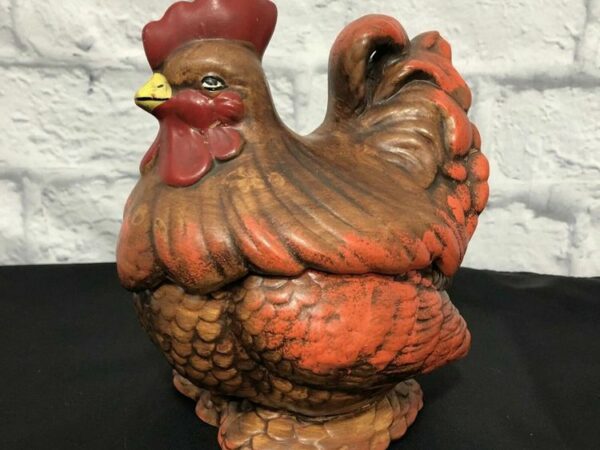Thanks to Sir Thomas Edison and technological advancements, we no longer need antique oil lamps, but that doesn’t mean we can’t want them. These relics have been with us, lighting the pathway long before the light bulb era.
Even though they’re not the primary go-to in today’s environment, Antique oil lamps still hold a certain appeal and serve as a secondary light source in emergencies. As long as you have oil, you can rely on the lamp to light up a room, and that’s worth spending some money.
For a small fee of $25 – $150, you can get an antique oil lamp to beautify your country home. However, if you prefer luxury, check out some of the more expensive high-valued antique oil lamps.
We’re here to ease your collection journey and help you avoid common mistakes like picking a Kerosene lamp instead of an oil-powered one.
Table of Contents
The Top Ten Most Valuable Antique Oil Lamps
No. |
NAME |
YEAR |
PRICE |
1 |
Dragonfly Oil Lamp |
1880 |
$11,869.34 |
2 |
Blue Dragon |
1860 |
$9,500 |
3 |
LONGWY Ormolu Oil Lamp |
1850 |
$6,700 |
4 |
Dresden Porcelain Oil Lamp |
1880 |
$5,150 |
5 |
French Empire Chandelier |
1800s |
$5,030 |
6 |
PRUSS Miners Lamp |
1800 |
$4,499 |
7 |
Sinumbra Boston Sandwich Oil Lamp |
1850 – 1899 |
$4,250 |
8 |
Aladdin Swan Oil Lamp |
1800s |
$4,200 |
9 |
Sukunda-Newaru Bronze Lamp |
c. late 1600s – early 1700s |
$3,500 |
10 |
The Fisherman Oil Rain Lamp |
1970s |
$3,000 |
10. The Fisherman Oil Rain Lamp
Year: 1970s
Price: $3,000

Technically, this is not an antique Oil lamp because of its production year, but it’s one of the rarest designs ever made, so it deserves an honorable mention. Just this once, we’ll overlook the fact that it is from the Seventies.
The Fisherman Oil Rain Lamp is a Steampunk Steele Collection featuring a realistic fisherman figurine rocking back and forth to catch a fish. He has a little child accompanying him on the riverbank, and they glow when you light up the oiled wick.
9. Sukunda-Newaru Bronze Lamp
Year: c. the late 1600s to early 1700s
Price: $3,500

One beautiful thing about collecting antique oil lamps is interacting with various cultures, and collectors get that experience with this Nepalese oil lamp. It’s from the Sukunda-Newari culture, and it features tiny skull heads formed in a ring around its perimeter.
The lamp takes the shape of a jug into which you’d pour your oil, and then an extended mouth holds the wick for the fire. Nepalese legend has it that this lamp symbolized the lake and hood deity of the region Lord Ganesha – the God of Prosperity and well-being.
Surely, you’d understand why an antique oil lamp believed to bring prosperity into homes costs a little over $3,000.
8. Aladdin Swan Oil Lamp
Year: 1800s
Price: $4,200

There’s nothing like a handcrafted stone oil lamp formed like a swan such that its handle is the long neck of the graceful bird. This antique oil lamp is historically significant because it also has the mythical Greek God Zeus’ head on its opposite end.
It also has a serpent-like base circling the swan’s webbed feet. There’s no denying the expert craftsmanship put into carving this stone lamp, which has a complementary value.
7. Sinumbra Boston Sandwich Oil Lamp
Year: 1850 – 1899
Price: $4,250

As a made-in-USA original antique oil lamp, it’s no surprise the Sinumbra Boston Sandwich Oil Lamp landed on this list. Its top-tier materials are some of the most coveted styles amongst collectors. The lamp also has a handmade clear overlay cut glass with a marble base.
6. PRUSS Miners Lamp
Year: 1800
Price: $4,499
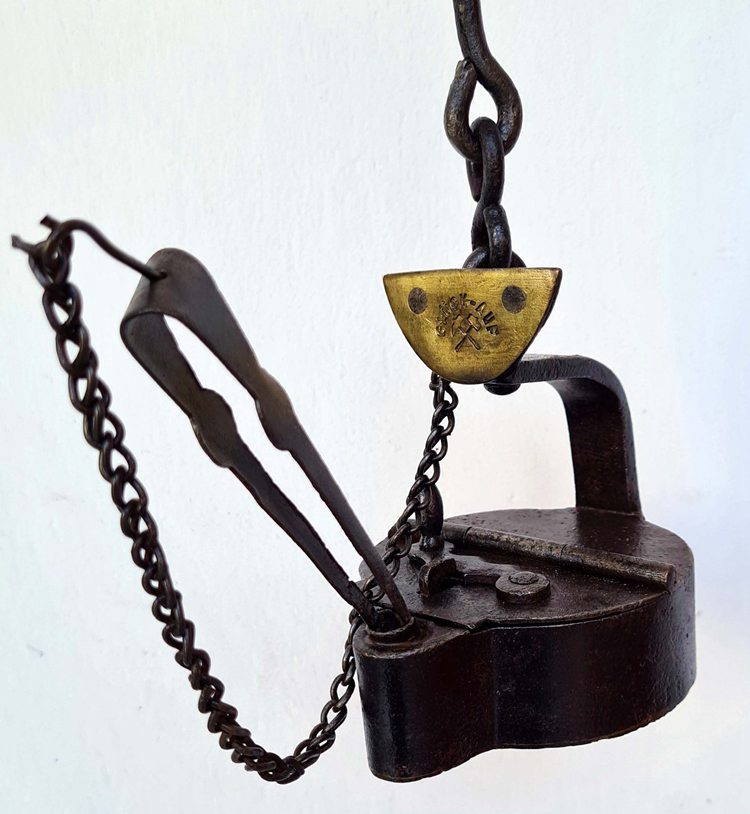
Long before the first World Wars, when nations were still fighting for self-determination, a military division dedicated to mining used antique oil lamps to light their way underground.
German company PRUSS made the iron cast oil lamp to aid the miners in the Peruvian Gold Mines.
Unlike the early 20th century models, this 19th-century oil lamp uses a very old lightning technique, and it has a hanger for convenient placement while the miners dug through the dirt. It’s worth noting that this antique oil lamp is a Betty. Please keep reading to find out its meaning.
6. French Empire Chandelier
Year: 1800s
Price: $5,030
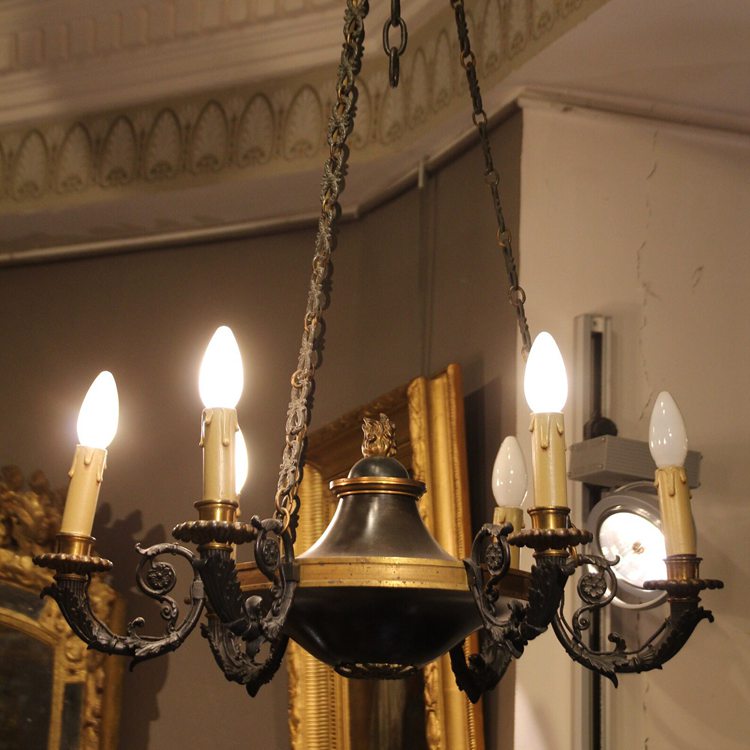
One, Two… Six lightning bulbs on one grand chandelier for the price of one, now that’s a bargain. This French Empire chandelier hanging from the ceiling has a classic 19th century patinated bronze reminiscent of the understated grandeur of that era.
While the extended candleholders use intricate gilt bronzes to decorate roses and stalks, the lamp holder (Oil container) is a simple top-like ornament in the center. You can tell that this oil lamp was one of the predecessors of modern electricity as we know it today.
5. Dresden Porcelain Oil Lamp
Year: 1880
Price: $5,150

This Meissen Porcelain oil lamp has a hand-painted floral and insect motif common to the Victorian era. The manufacturer made it for returning US soldiers and named the collectionGone with the Wind.
Its 10-inches high oil-holder makes it one of the most coveted models because of its content capacity.
4. LONGWY Ormolu Oil Lamp
Year: 1850
Price: $6,700

This Victorian Art Deco lamp made from LONGWY Porcelain and Brass Shade is a free-standing antique oil lamp. It has a rare sphynx base common to the early nineties art deco era that designed items for dual purposes – aesthetics and functionality.
2. Blue Dragon
Year: 1860
Price: $9,500
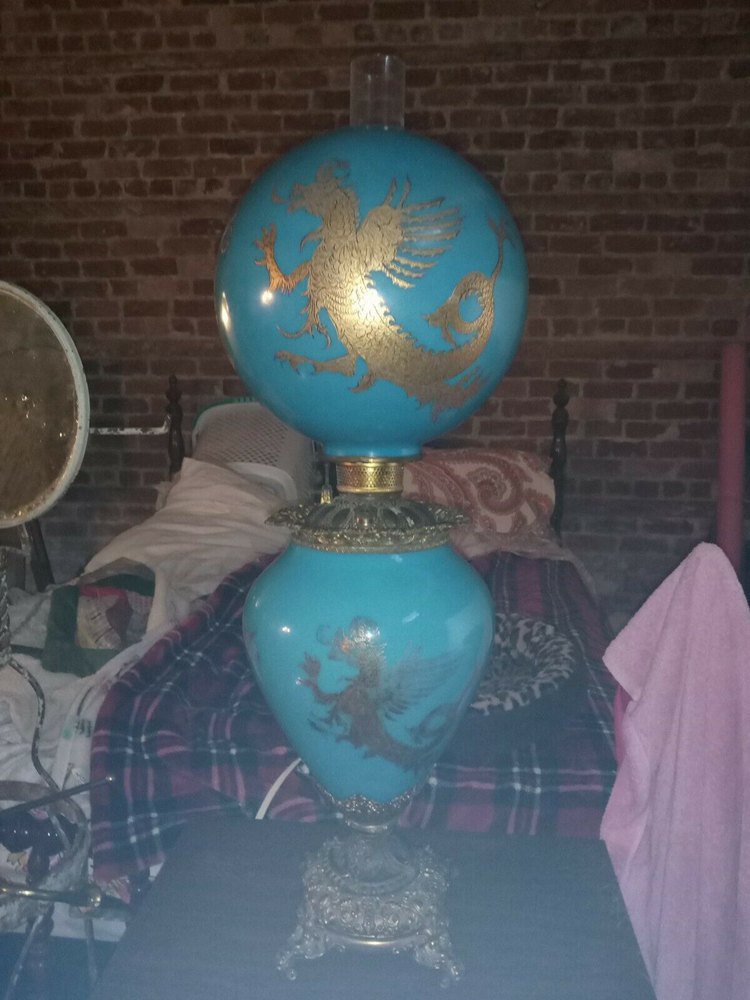
This globe chimneyGone With The WindBlue Dragon oil lamp is also a special issue made for Americans. It’s a classic Art Nouveau design with a Rococo base and neck hints.
1. Dragonfly Oil Lamp
Year: 1880s
Price: $11,869.34
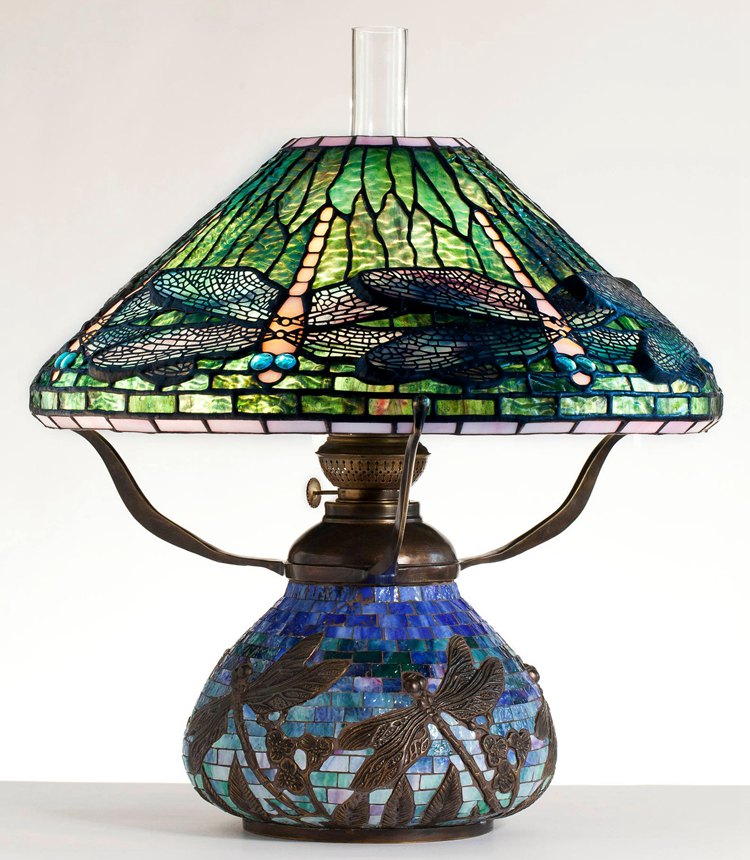
This Dragonfly Oil Lamp has all the qualities that make for a high-valued sale, from the stained-glass dragonfly chimney lid to the mosaic lower body and wound burner. It’s a Gone with The Wind style oil lamp.
How to Identify Antique Oil Lamps
Because of the appeal antique oil lamps hold amongst collectors, many modern companies make reproductions without the intent to deceive. Regardless, buyers can make mistakes when they don’t know the difference but don’t worry, that’s why you’re here.
Identifying antique oil lamps is relatively easy if you follow these steps.
Check the body
The good thing about evolving techniques is that they let you pinpoint exact production eras. So, examine the perimeter of your antique oil lamp for pre-1920s production signs. They often used partly threaded bolts for fusing important parts.
The joint adhesive is another great identifier because early antique oil lamps used plasters while modern manufacturers used glues. Also, ensure the glass on your antique oil lamp has slight bumps due to the handblown technique used to form the cylinders.
Use the Blacklight Test
Raise your antique oil lamp to a blacklight in a dim-lit room and check for fused glass parts – they won’t glow. Newer models (a.k.a. reproductions) which use glues to fuse parts, however, glow under blacklights, so take note.
Identification by Burner
Prong Burner – This burner is a four-pronged design to secure the chimney.

Coronet Burner – The chimney sits on a crown-shaped burner hence the name coronet.
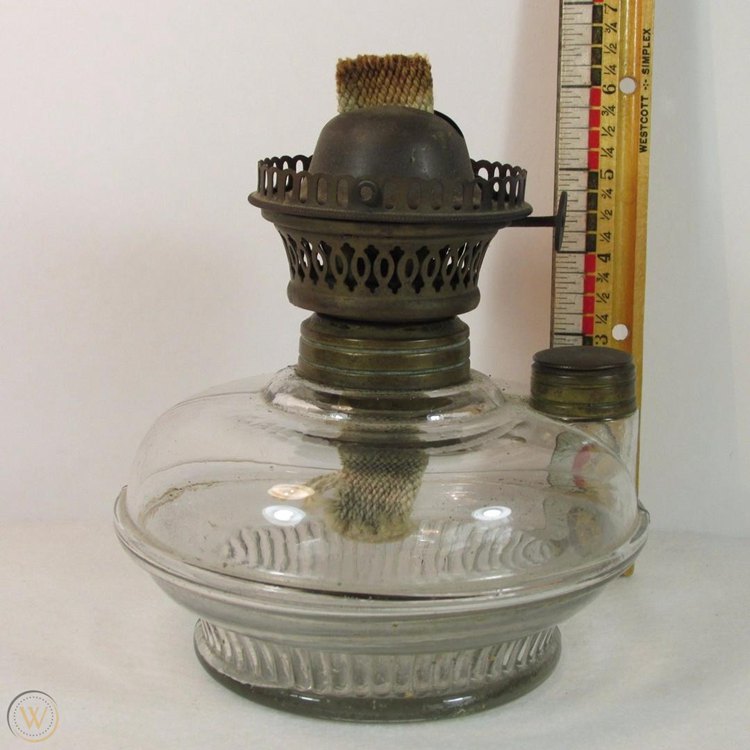
Whale Oil Burner – Dual long tubes hold a wick down into a reservoir that holds the oil. Then the whale oil melts from the wick’s heat.
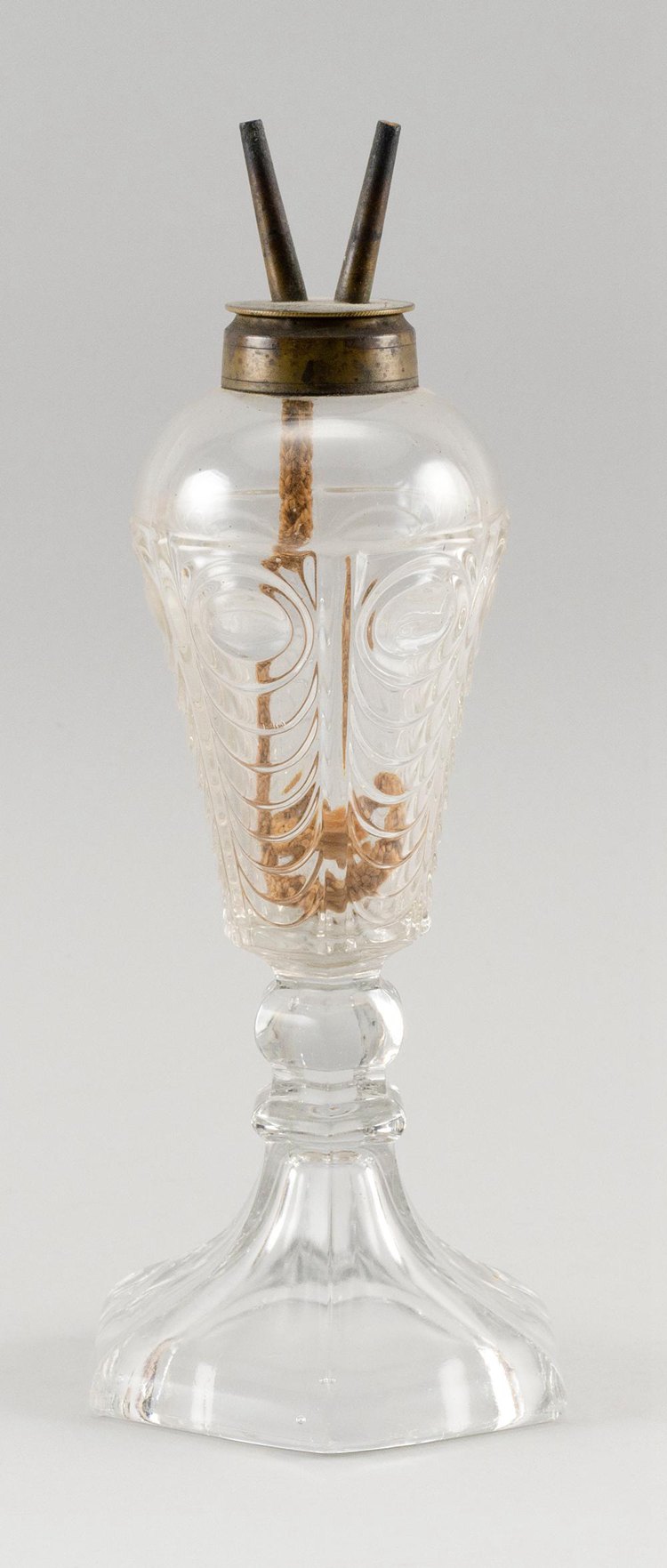
If you want to learn more about burners, I highly recommend that you check out the burners from the 1840’s onwards here
Identification by Maker
Using a maker’s mark is the most reliable identification source on the antique oil lamp because it answers most of your questions. By assessing the brand’s evolution timeline, you can tell the age and authenticity.
How long did the company exist? How many logos did it use during its existence? What lamp styles did it design per era? Ask yourself those questions.
Turn your antique oil lamp upside down and check for the wick wound button. You’d see a stamp on it identifying the maker. Aladdin, Rochester Lamp Co., Beacon Light, and Erich & Graetz are notable names.
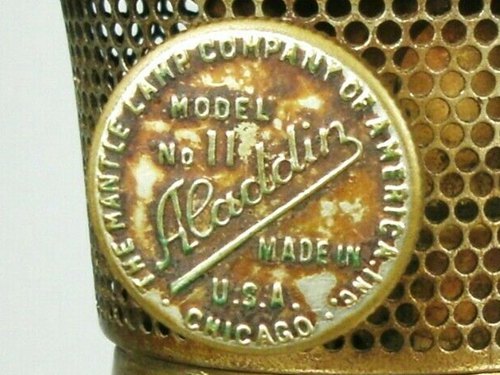
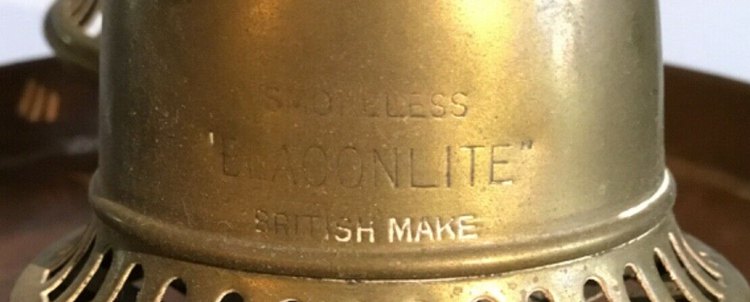
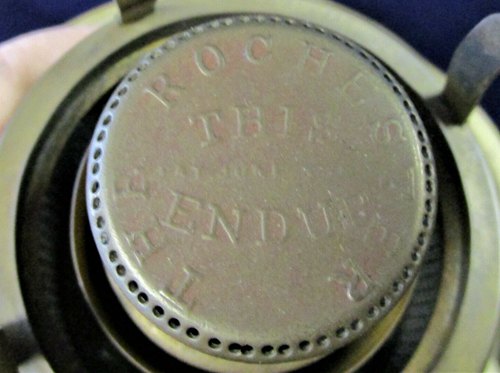
Aladdin and Rochester Lamp Co. marked their lamps with their full name spelled out, Beacon Light wrote its name in block letters surrounded by a circle, and Erich & Graetz used two dragons facing themselves.
Identification by Patent Numbers and Dates
Makers typically inscribed patent numbers on their lamp winders, burners, and lamp bases. Crosschecking with a database is another accurate way to determine the authenticity of an antique oil lamp.
How to tell How Old an Antique Oil Lamps Is?
Once you’ve determined the authenticity of your antique oil lamp, the next step is determining its age to avoid mistagging a vintage as an antique. Remember, it’s only an antique if it’s 100 years old. A few factors can help you place the year of production and brand.
Identification by Style
Here’s how to decipher the age of an antique lamp by simply taking a look at the style adopted.
Handle Antique Oil Lamps

Think of the genie lamp from Aladdin, and you’ll have a mental picture of what a handle antique lamp looks like. It’s sleek with a tiny loop wide enough to accommodate a finger for convenient carriage around the home.
Hanging Antique Oil Lamps
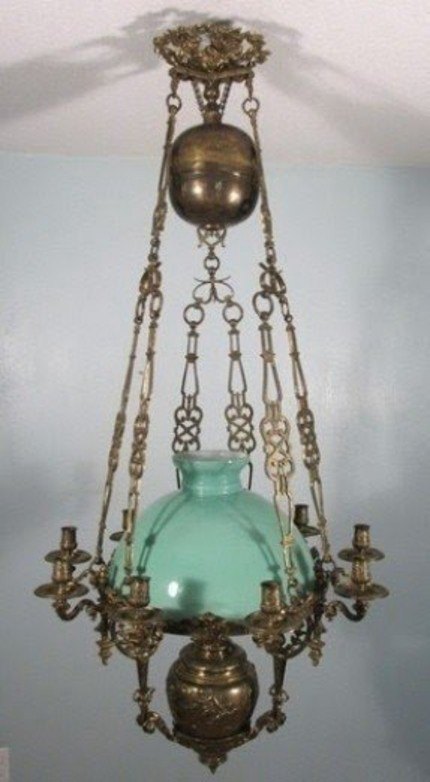
For a more picturesque setting, manufacturers made oil lamps with hanging loops. Owners could place them on the wall without stressing over carriage around the rooms.
Wall Antique Oil Lamps
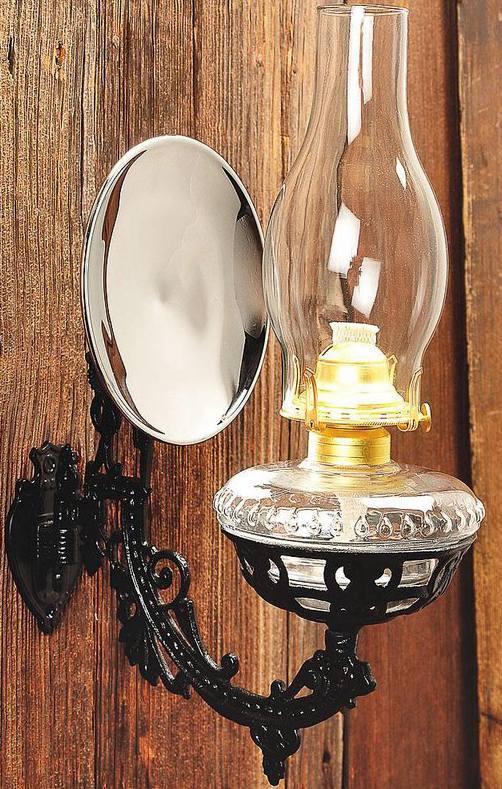
After the success of the hanging antique oil lamps, the idea of leaving them permanently on the walls became more appealing. Wall antique oil lamps shone by reflecting light from the wall.
Identification by Type
There are different types of antique lamps. Here’s how to figure out the age by the type.
Astral Antique Oil Lamp

The 1830s Astral Antique Oil Lamp got its name from the suspended air holes around its base using an Argand burner to catch excess oil trickles.
Banquet Lamp
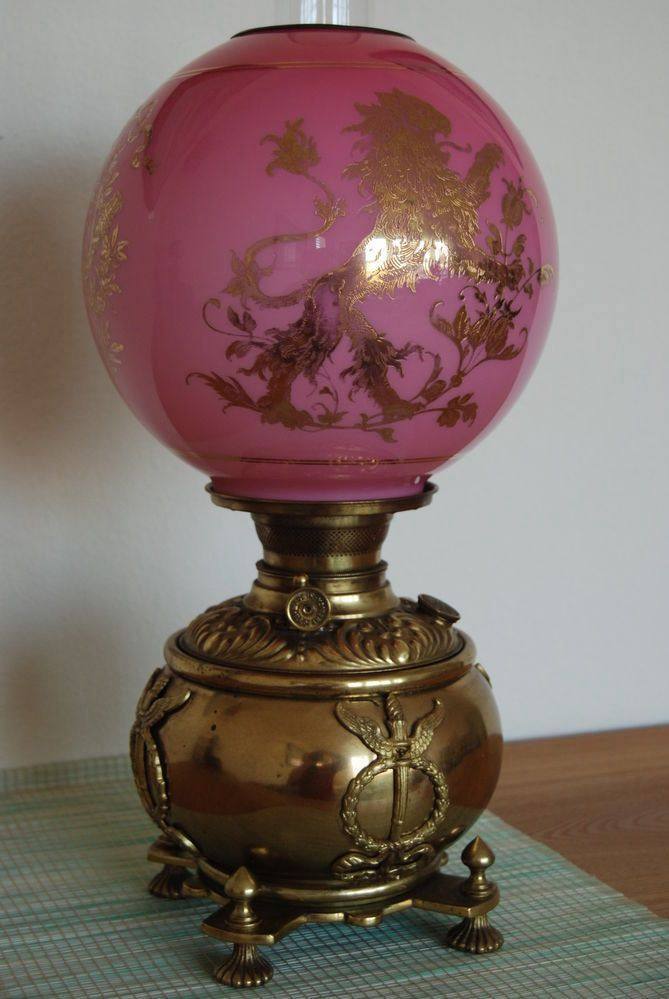
The double globe style lamps with hand-painted motifs originated in the USA in the 1880s. However, it became popular after the 1940 blockbusterGone With The Windhence its nickname.
Banquet lamps combined multiple patterns and materials into one detachable masterpiece. The parts of a banquet lamp include A fount, Vase, Decorative stem, and Chimney.
Cruise Antique Oil Lamp

This oil lamp soaked up more oil than it could consume, causing the makers to fit in secondary reservoirs on the lamps to catch the excess liquid. Since they couldn’t continue with that flawed technique, they upgraded to the Betty Lamps.
Betty Antique Oil Lamp

Homemakers who couldn’t afford to waste precious oil like the Cruise Lamp appreciated the Betty Lamp because it converted the excess into reusable oils. Instead of disposing of the spillage, the lamps incorporated covers to reduce the burns from the wick.
Central Draft Oil Lamp

By the late 1700s (1780 precisely), manufacturers narrowed the lid into a chimney to allow airflow for brighter lights since the Betty Lamps were dimly lit. They adapted this technique based on the invention of Swiss alchemist Aime Argand.
This era brought controlled burners to regulate light intensity based on preference.
Painted Bulbs
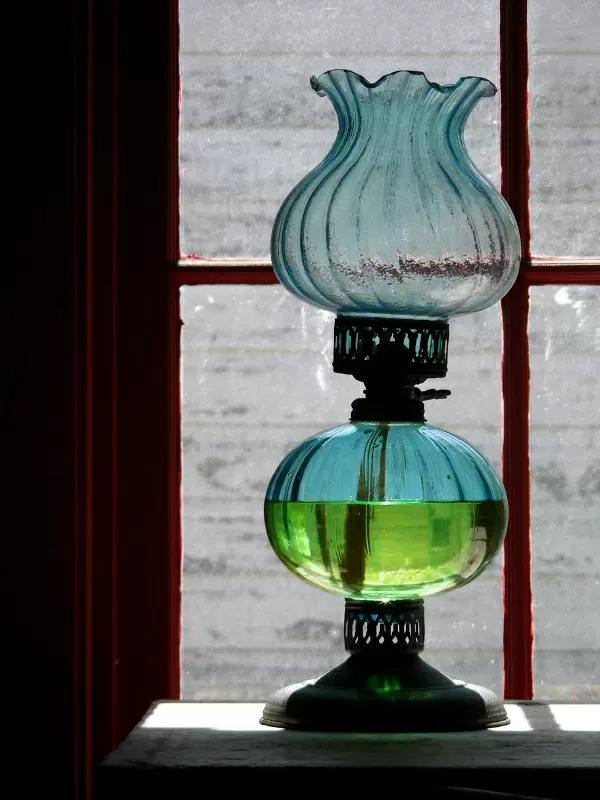
The Art Deco and Art Nouveau characteristics of items in the late 19th century spilling over the early Victorian era before the First World War influenced the antique oil lamp market. Artisans started making painted bulbs to reflect fancy-colored lights like the Kerosene lamp.
Eventually, technology evolved into gas lighting and electric lightning (1950), pushing oil lamps to the background. Before then, however, the antique oil lamp makers fought to maintain relevance in the fast-evolving market by adopting modern designs.
You can check out Antique Lamp Supply for a more detailed list of the different types of antique oil lamps.
Conclusion
Antique oil lamps are great collectibles to have as décor and backup light sources. However, be careful to choose government-approved oil to avoid compromising your lamp and environment.
You can buy one for at least $25 unless it has special characteristics that hike up its value. Then, you should get ready to shell out thousands of dollars for one antique oil lamp.
Remember these points when you go shopping;
- Antique oil lamps don’t glow under blacklights because they use plaster
- You can find the identification number on the bottom, and
- Antique Oil lamps aren’t the same as kerosene lamps.
FAQs
What does it mean when antique lamps have a number on the bottom?
A:The number on the bottom is for tracking the model of an antique oil lamp per brand. Manufacturers give each era unique numberings to distinguish the designs, and it’s good for identification today. You can easily crosscheck on the company’s database to know if your antique oil lamp is legit or not.
How to Identify Antique Lamps
There are different ways you can identify antique lamps starting with the brand, style, and numbers. Start with the steps laid out in this article, then add new methods as you get familiar with the world of antique oil lamps.
How to find the age of antique lamps
A:You can determine antique lamps’ dates by assessing their style and checking their identification number. See the tips above for pointers.
How much are Antique Oil Lamps Worth?
A:Antique oil lamps don’t cost much, as you can get a decent one for a little over $25. If you’re looking for something more valuable, however, that’ll set you back hundreds of dollars because of their high-quality materials and other appreciating factors, which you’ll learn below.
Where to sell antique lamps
A:You can sell antique lamps on any reputable auction site online like Etsy and eBay. You can also bid at auction houses and estate sales.
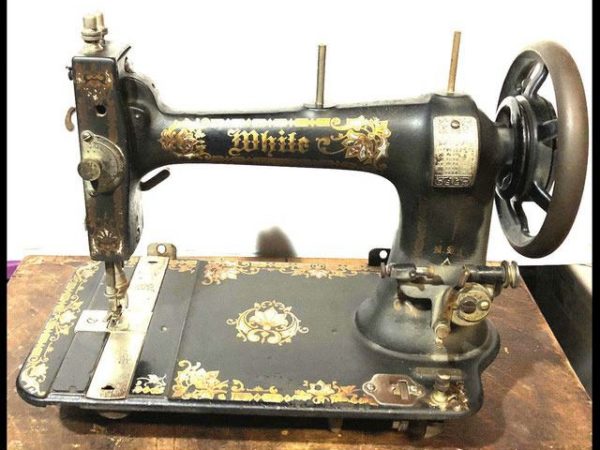

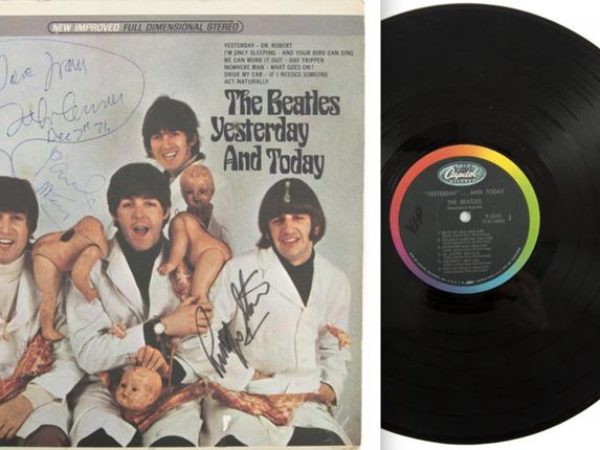

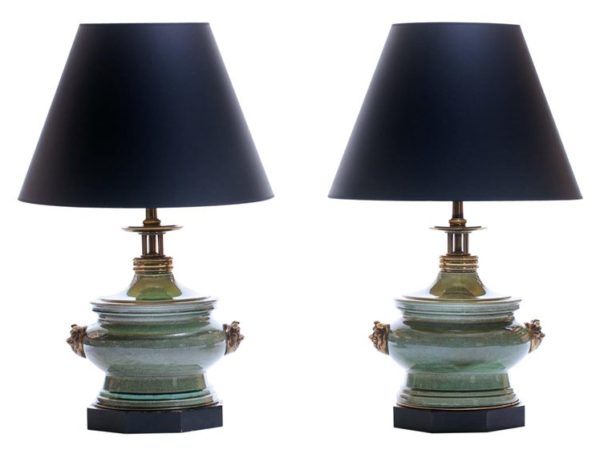
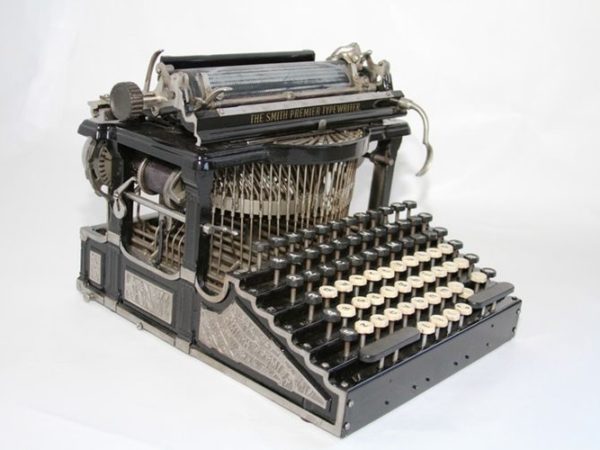
![Vintage Schwinn Bikes: [Types, Identification, and Values]](https://www.txantiquemall.com/wp-content/uploads/2022/05/5.-Schwinn-1967-Ramshorn-Fastback-Stingray-Sky-Blue-vtg-600x450.jpg)
